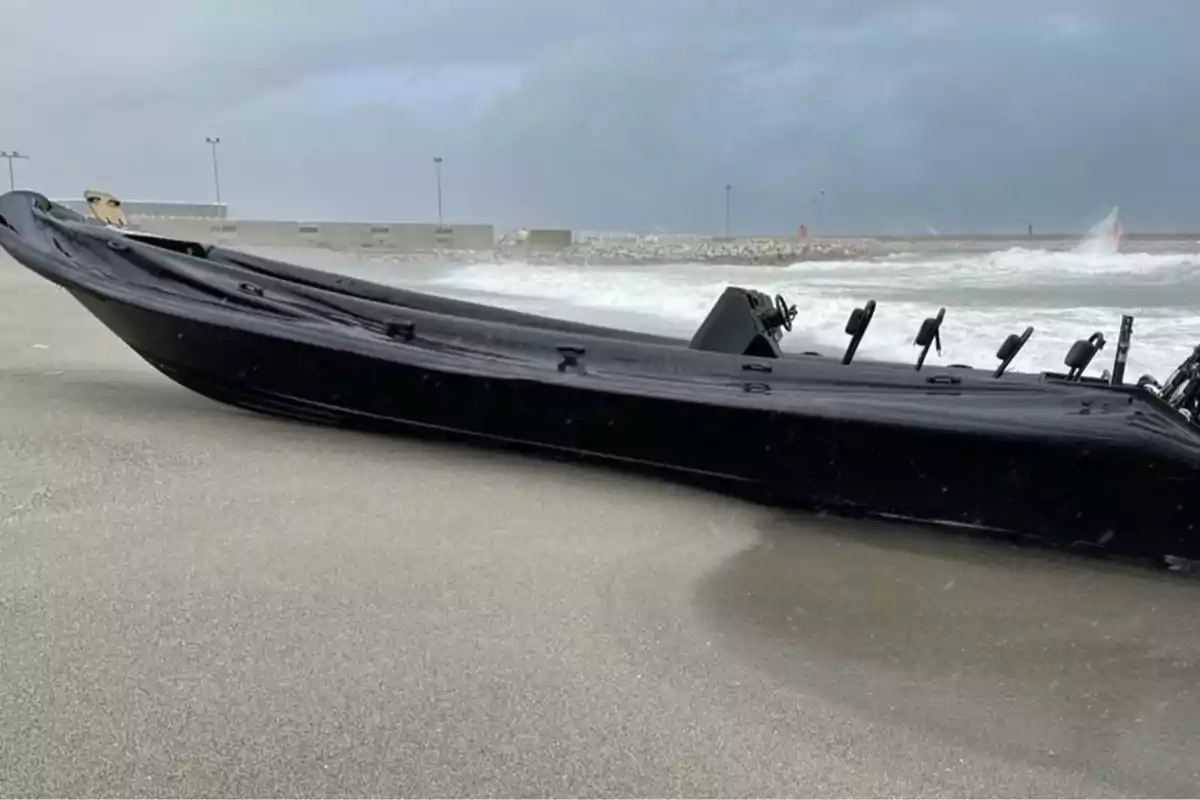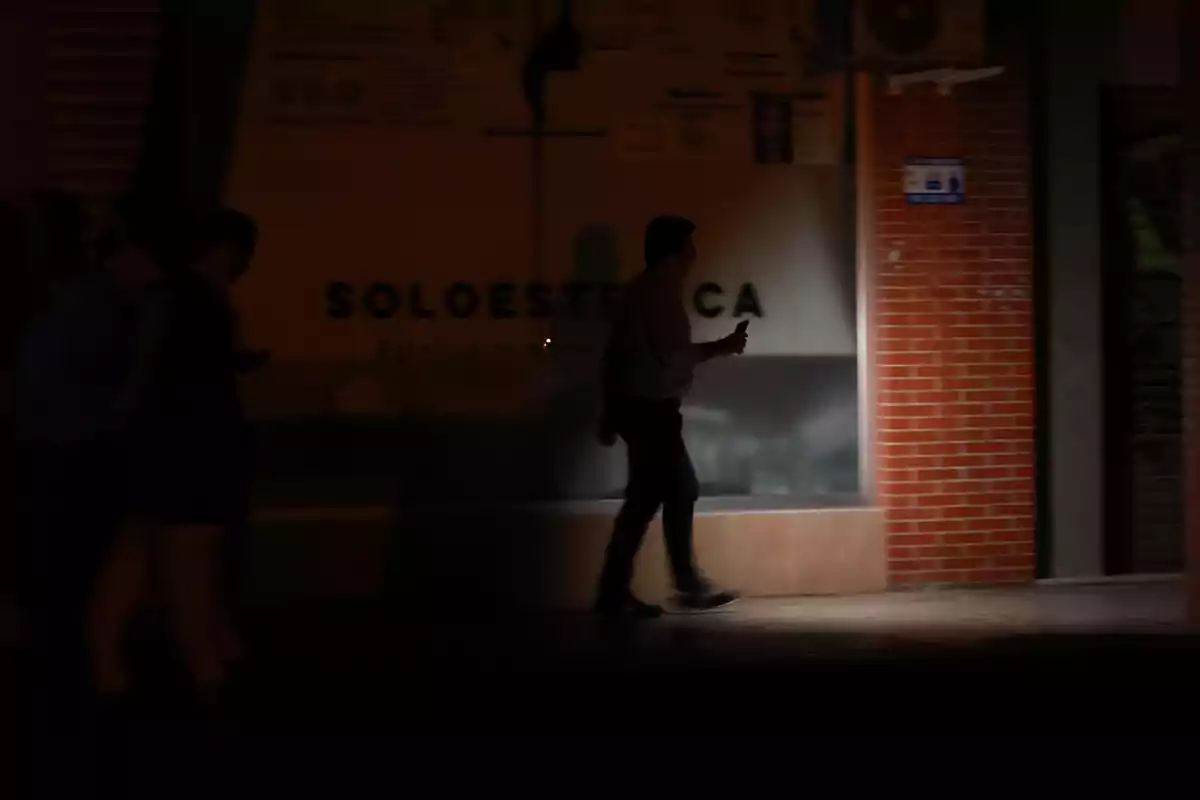
Spain's Fragility in the Face of Blackout: Shadow of Narcos and Other Security Threats
The Army Flew Over the Rías Baixas After a Critical Day That Showed Security and Communication Shortcomings
Last Monday, April 28, the Iberian Peninsula was plunged into darkness after an unprecedented power outage. An ‘electrical zero’ that affected the entire continental territory of Spain and Portugal. The sudden system collapsecaused the breakdown of key infrastructures such as rail transport, telecommunications, and supply to hospitals and official bodies.
But in Galicia, the alarm took on a particular tone. A few hours after the partial restoration of electricity, several fighter jets flew low over the Rías Baixas. A movement that caused a wave of public concern and speculation about its purpose.
The Ministry of Defense attributed these flights to planned maneuvers with the Navy. However, numerous analysts and local voices pointed out their temporal coincidence with the electrical crisis.

In a community historically affected by drug trafficking and with access to the Atlantic, many interpreted the deployment as a deterrent operation. A supposed response or surveillance in light of the possibility that criminal organizations might take advantage of the blackout to intensify their operations.
Galicia, moreover, was one of the eight communities that requested to activate level 3 of emergency alert. The maximum contemplated in the Civil Protection protocol.
Low-Flying Jets Over Pontevedra
On the night of Tuesday, the 29th, with much of the supply already restored, residents of Pontevedra, Marín, and Sanxenxo reported the passage of at least two Eurofighter Typhoons flying low over the estuary. The deafening sound of the jets, combined with the context of national alarm, unleashed a wave of messages on social media and calls to local media.
The official explanation described the maneuvers as routine, although it admitted that they coincidentally took place the day after the blackout. However, from security and defense circles, various voices continue to suggest that the deployment had a more tactical than casual component.

Numerous voices point out that given the blackout that rendered various surveillance systems inoperative, such as coastal cameras and peripheral radars, it can't be ruled out that the mobilization of military aircraft replied to a prevention strategy to keep territorial control at a critical moment.
Galicia, due to its geographical position and history as an entry route for drug trafficking, is considered an area of special attention. In this context, the appearance of jets over the coast could also be interpreted as an institutional show of firmness against possible opportunistic movements.
A Blackout That Leaves Security ‘Gaps’
The company Red Eléctrica de España described the blackout as “an exceptional and unprecedented disturbance.” The Government immediately activated the National Security Council, while Portugal did the same from its operations center.
In the early hours, hypotheses such as a cyberattack or sabotage were even considered. Although over time, both were discarded. Even so, the Ministry of the Interior requested the National Court to open an investigation under secrecy.

President Pedro Sánchez appeared without questions on Monday afternoon. All to confirm that more than 30 million people in Spain were affected. In some communities, such as Galicia and Andalusia -with key routes for drug trafficking-, barely 10% of the supply had been restored by nightfall.
Eight autonomous communities formally requested level 3 of emergency alert, including the aforementioned ones. This implies that the Ministry of the Interior assumes sole direction of operations. Galicia was one of the first to do so.
The president of the Xunta de Galicia, Alfonso Rueda, convened the Galician emergency committee. He also activated the Territorial Emergency Plan (Platerga) and requested logistical support from the central Government.

Level 3 allows for the deployment of reinforcements from the Military Emergency Unit (UME), sending generators to hospitals, and coordinating with the Army security patrols at sensitive points.
Although no serious public order incidents occurred, there were problems due to the lack of light, fuel, signaling, and communications, especially in the rural Galician environment.
Drug Trafficking Lurking in the Darkness
The concern about a possible increase in drug trafficking during the blackout is not unfounded. Police sources acknowledged that some organizations took advantage of the collapse of coastal surveillance and communication systems to mobilize boats. In Andalusia, specifically at the mouth of the Guadalquivir and the Cadiz coast, unusual movements of drug boats were detected.
While security forces doubled patrols, many did so without the usual support of electronic means. Radios without coverage, depleted batteries, and vehicles unable to refuel at inoperative gas stations complicated police work.
Even so, no detected caches or large landings were recorded, although it is suspected that some operations may have gone unnoticed.

In Galicia, the activity of drug boats did not visibly increase, but maritime intelligence and surveillance services acknowledge that the fall of observation systems created a window of opportunity.
Hence, many analysts consider that the presence of jets over Pontevedra could have been part of a deterrence strategy. A movement aimed at ensuring the integrity of the airspace and preventing possible incursions during a particularly critical day.
Collapse of Essential Services
Beyond the security issue, the blackout tested the resilience of the institutional system. Hospitals, residences, police stations, and emergency centers operated for hours with generators.
In some cases, backup batteries began to deplete by nightfall. Radio stations became the only operational channel to inform the population.
The streets of the cities remained without traffic lights, and traffic was regulated by officers or even volunteers. Train stations closed, the Madrid metro remained stopped for more than five hours.
Airports also reported delays and cancellations due to signal drops. To make matters worse, the fall of the banking network prevented cash withdrawals or card use during Monday afternoon.
A Lesson in the Darkness
President Sánchez requested a report from the European Commission to clarify the origin of the failure and assess reinforcement measures. The Executive preliminarily estimates direct economic losses at more than 800 million euros. Although business associations raise them to 1.5 billion.
From Portugal, Prime Minister Luís Montenegro stated that the Peninsula must equip itself with “more robust shared protocols” in the face of electrical emergencies. The Iberian energy interdependence, historically lower than that of central Europe, has been exposed as a structural weakness.

The blackout of April 28 not only left more than 50 million people without light. For many, it highlighted that Spain and Portugal still lack effective immediate response mechanisms to large-scale technical crises.
The coincidence of that blackout with military maneuvers in Galicia, although officially unrelated, also revealed the strategic potential of a defense response in hybrid scenarios, where threats can come from both organized crime and hostile actors or systemic failures.
While the technical causes of the incident are being investigated, many security experts emphasize the importance of strengthening energy resilience. Also modernizing institutional backup systems and shielding critical infrastructures against new forms of vulnerability. The lights have returned, but the questions and alerts remain.
More posts: